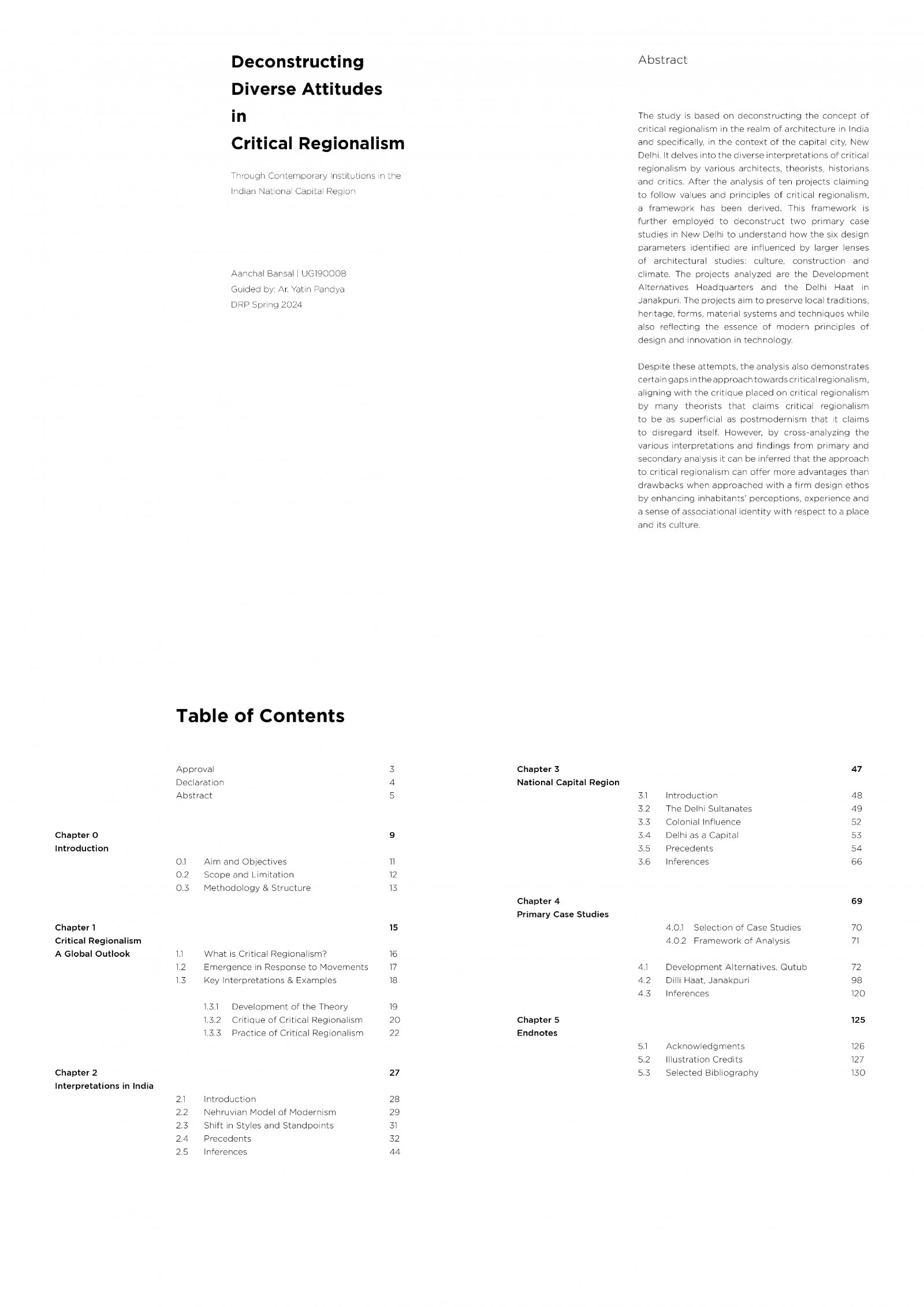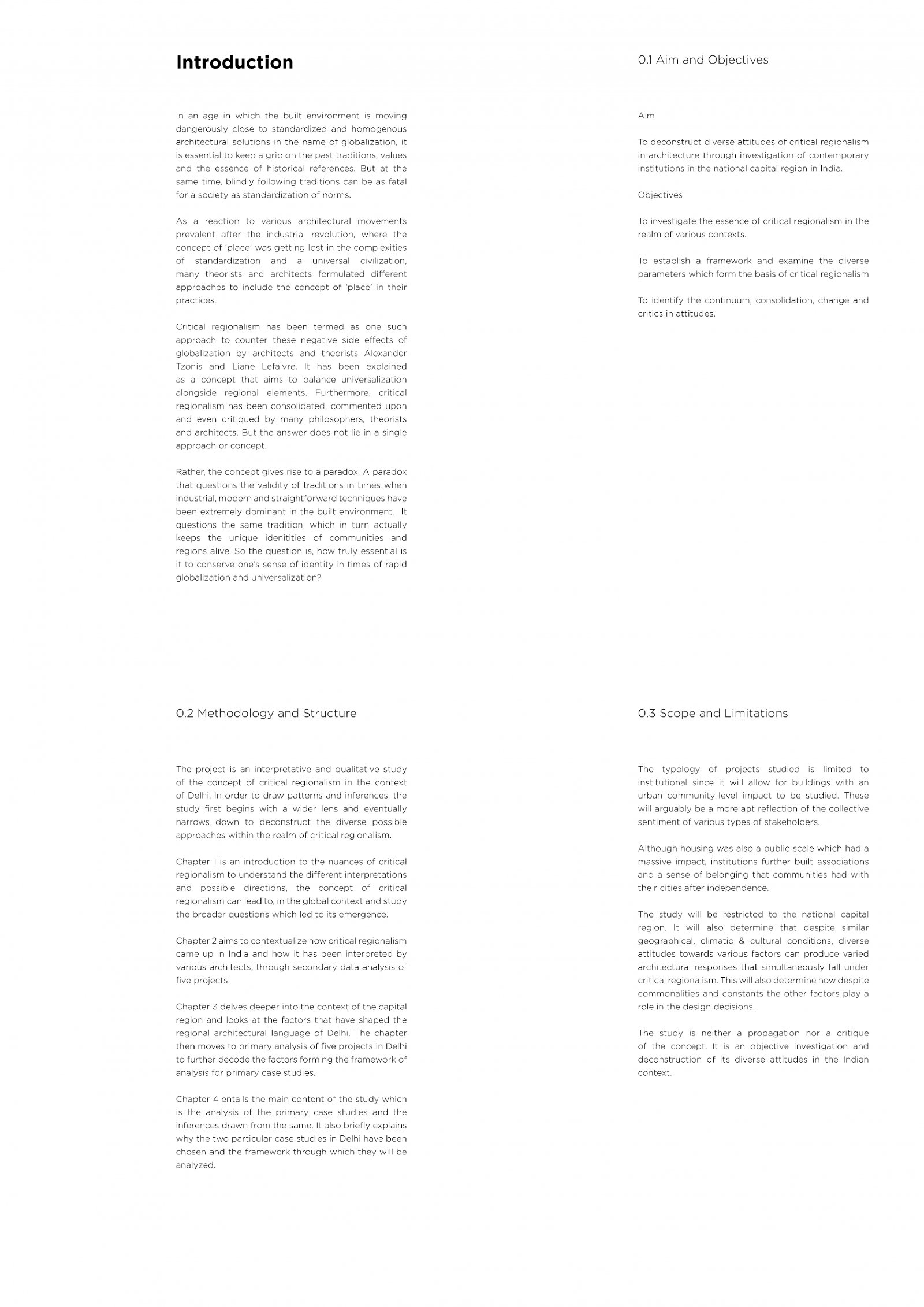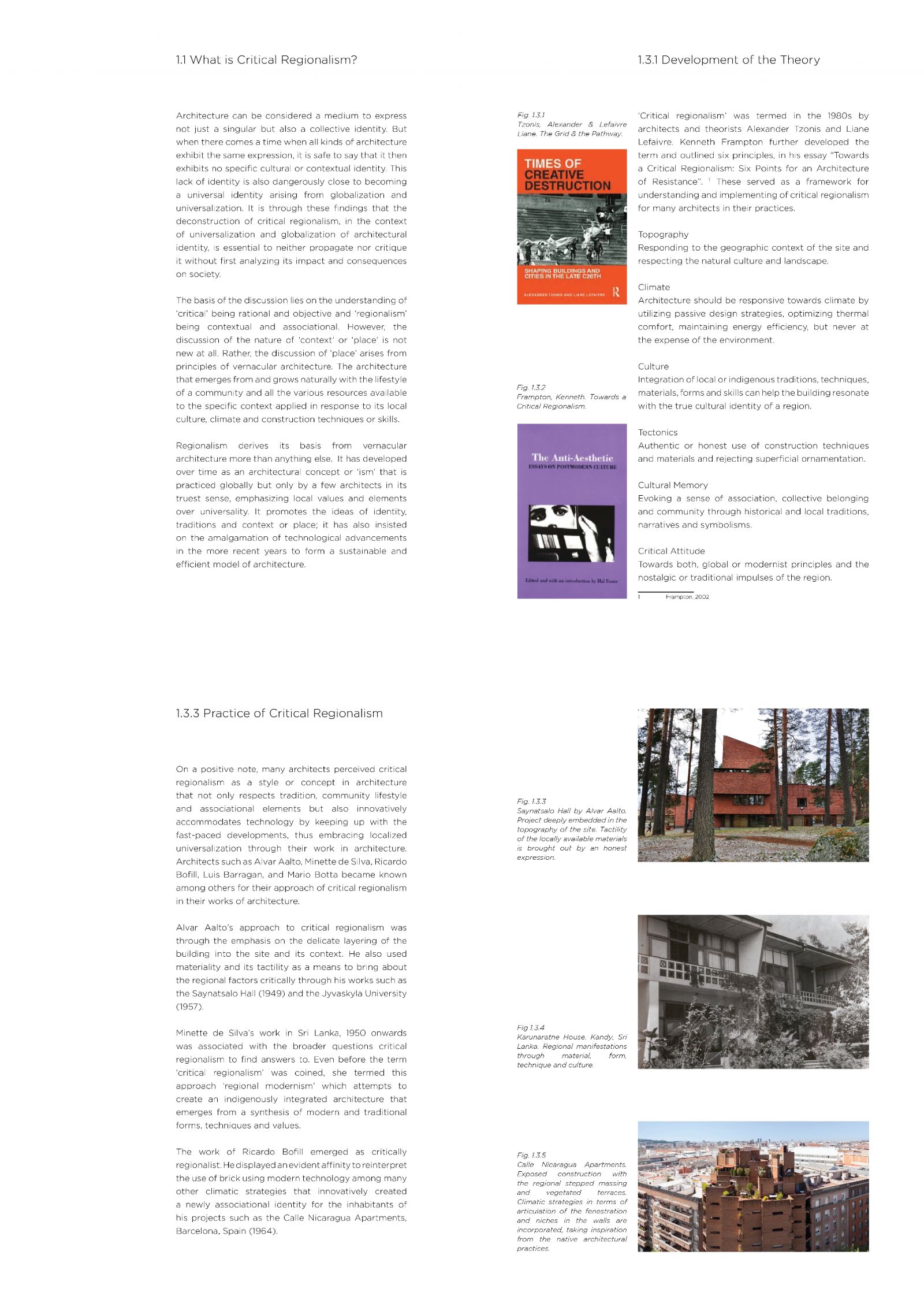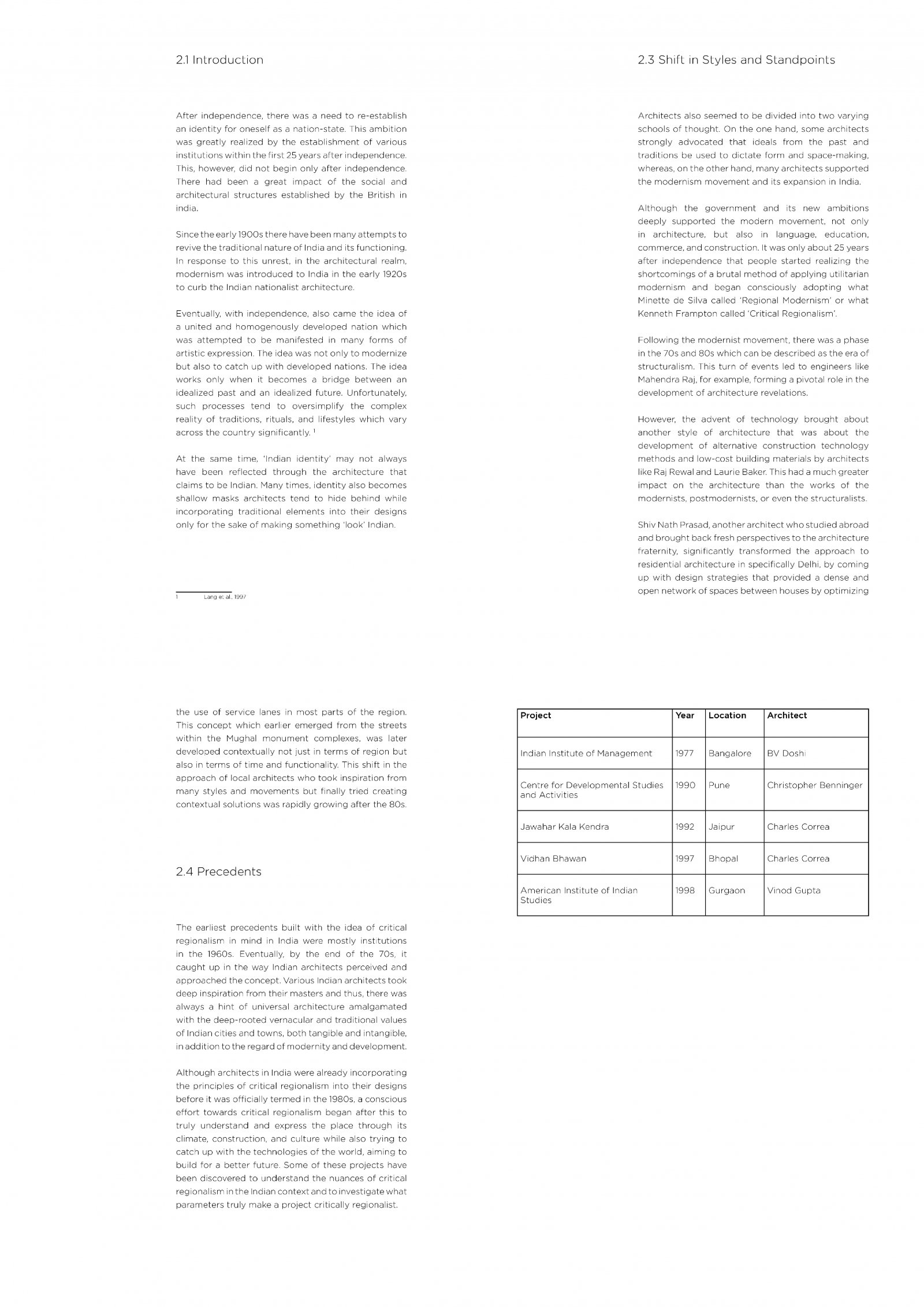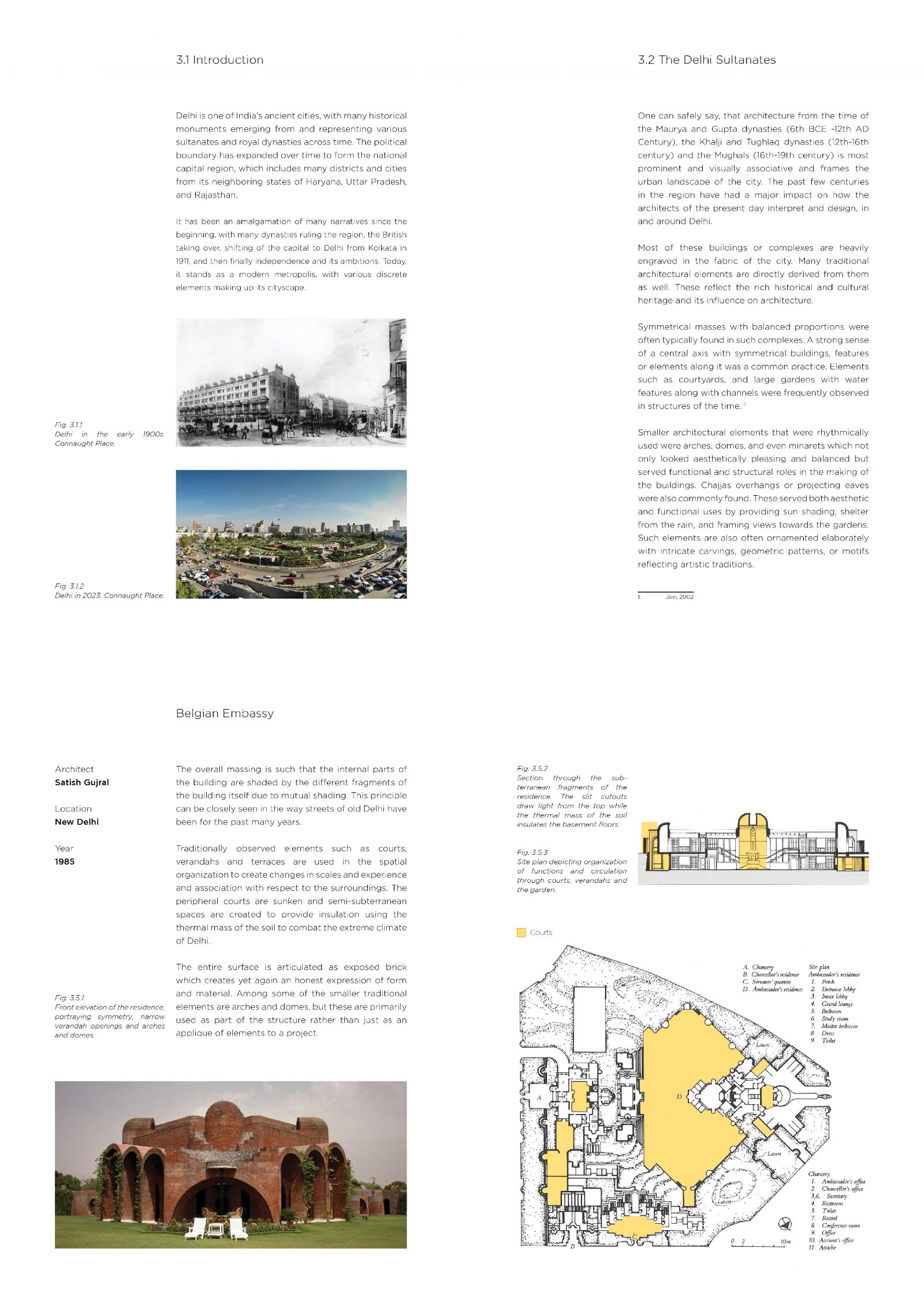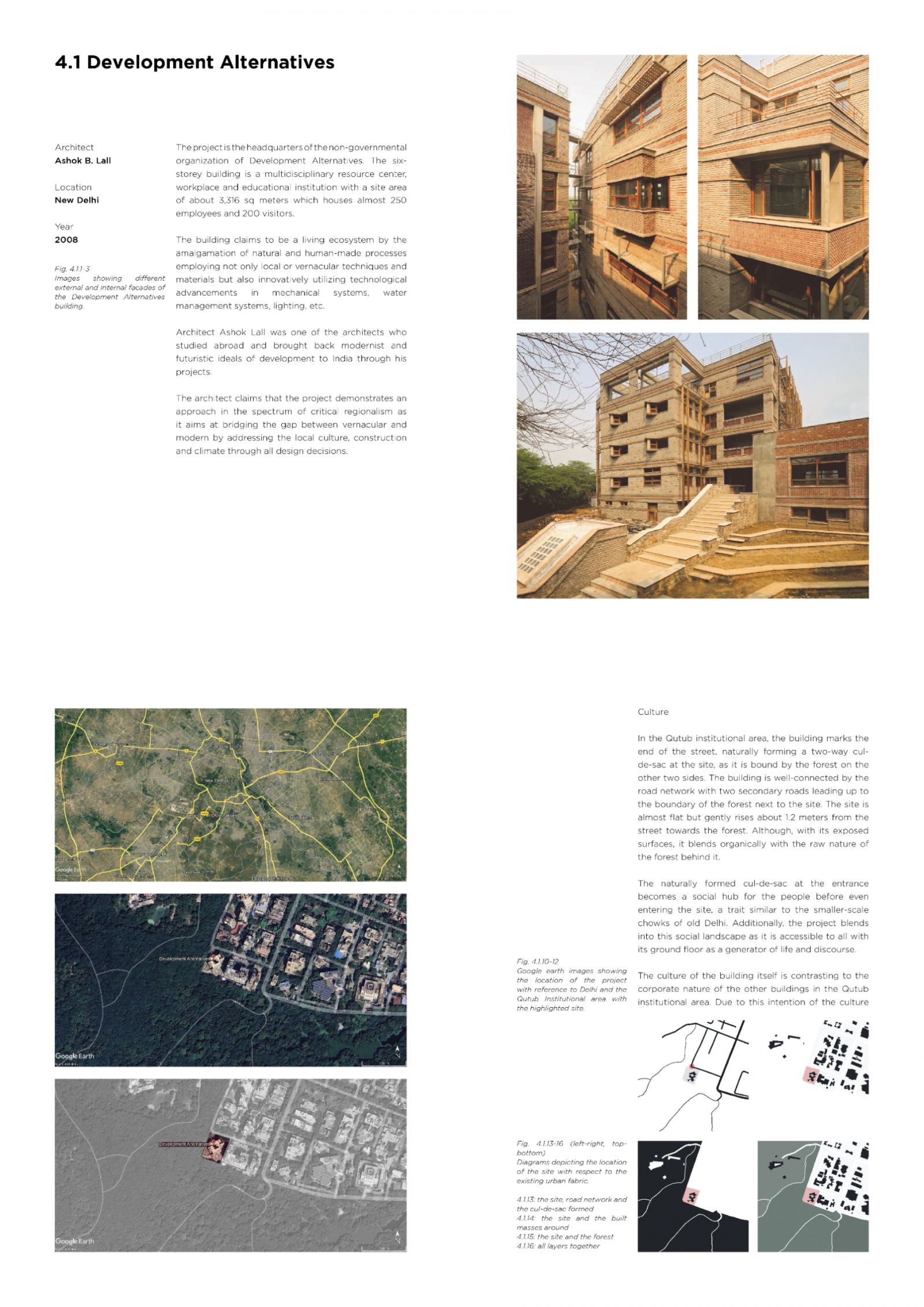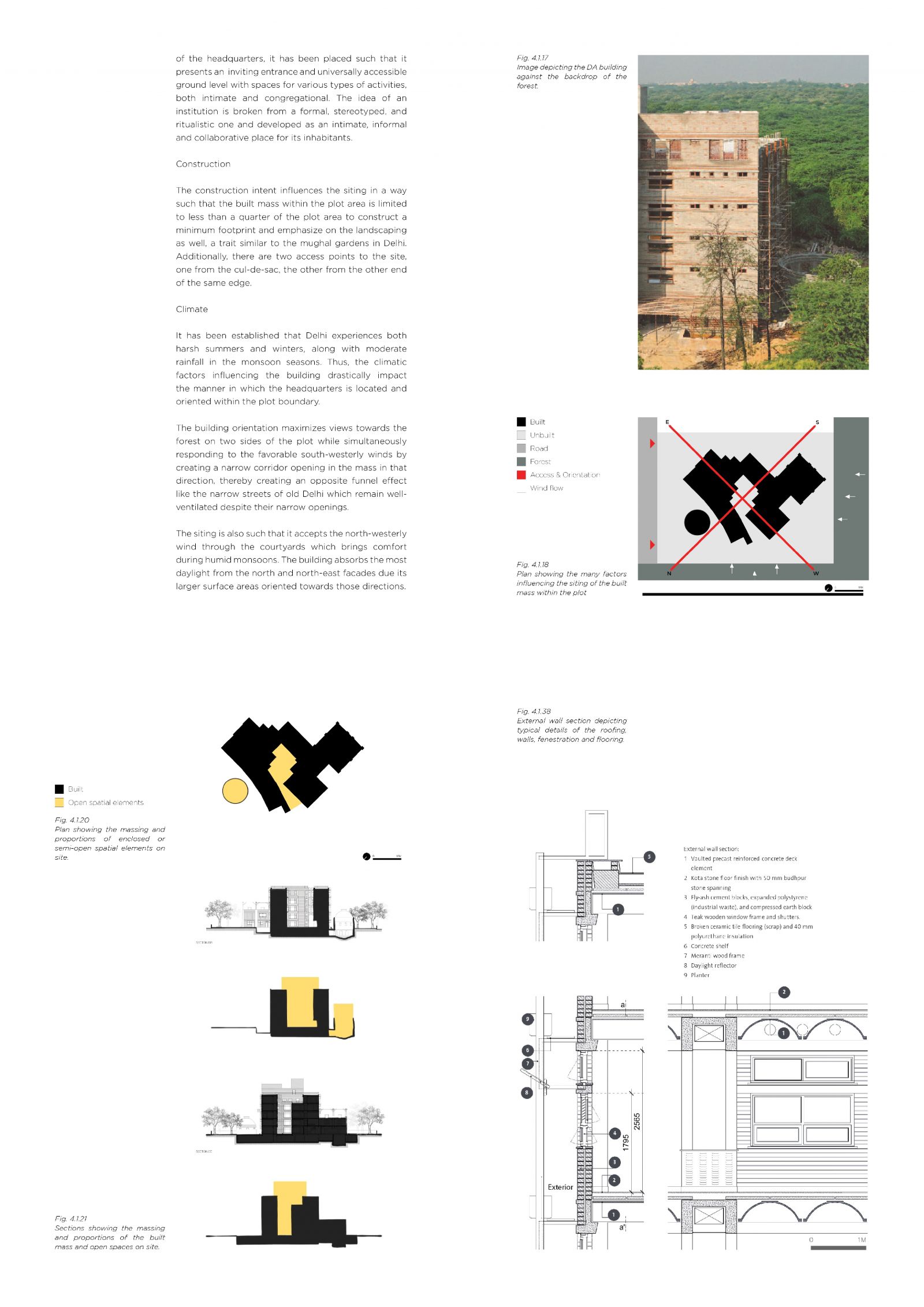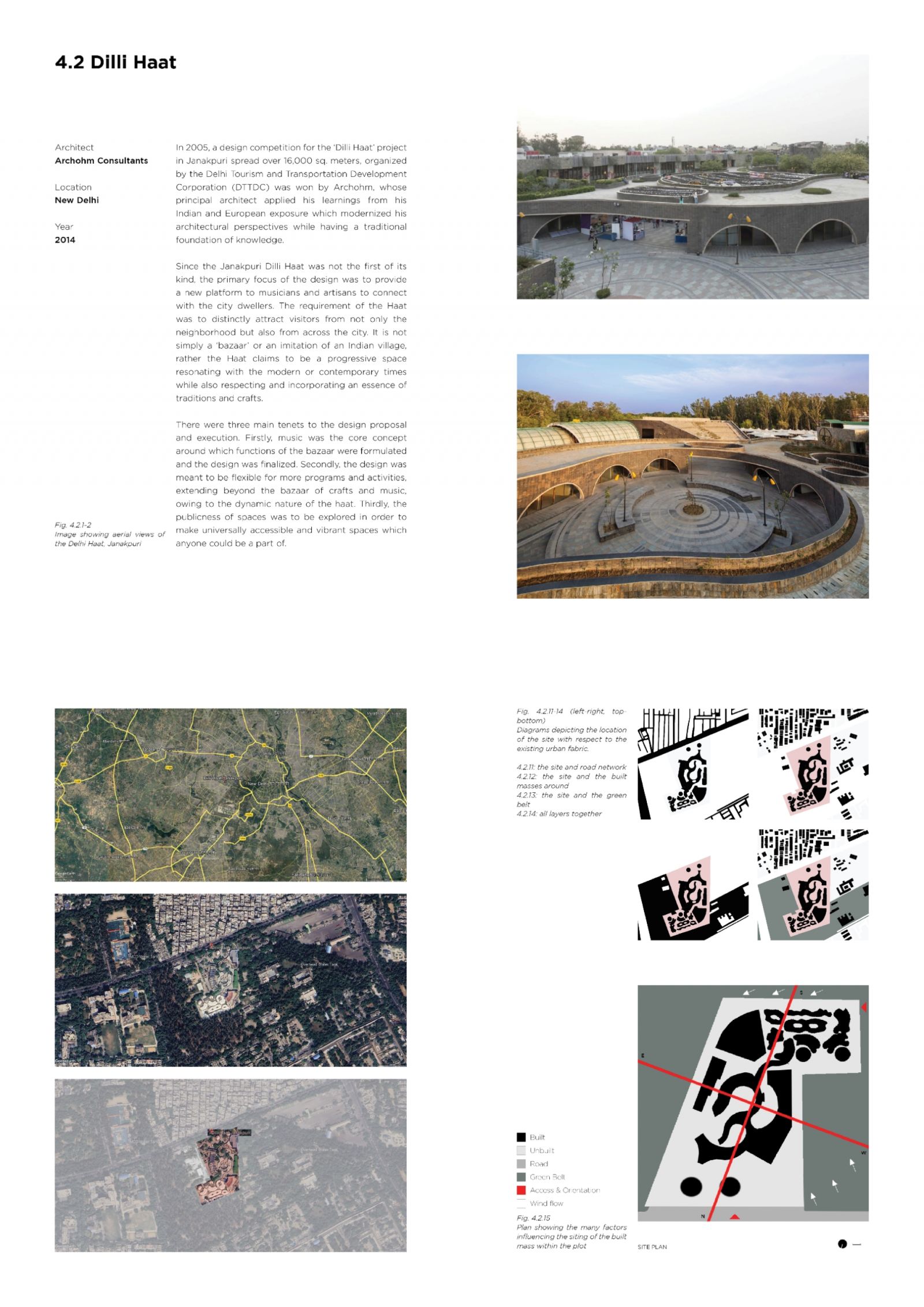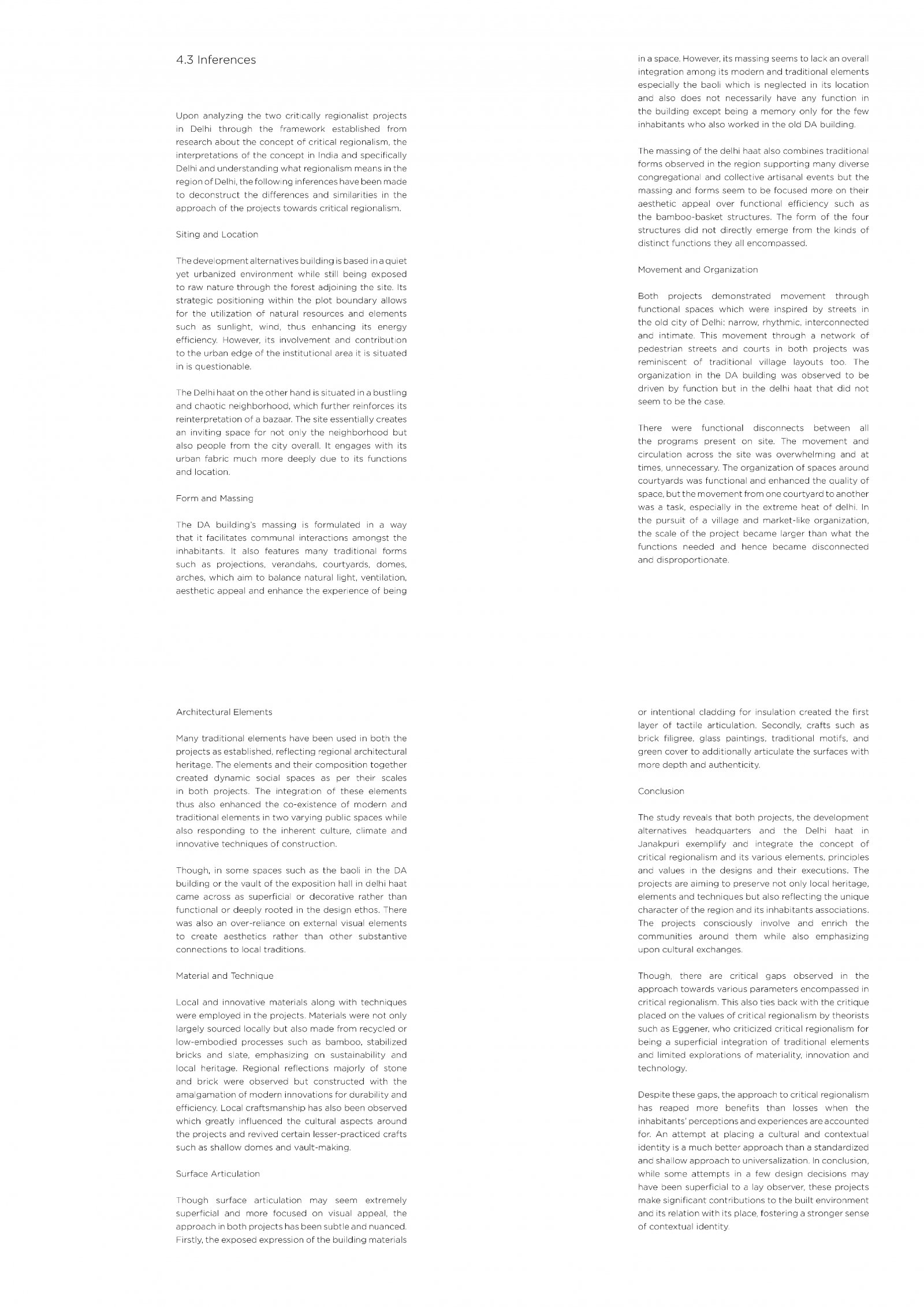Your browser is out-of-date!
For a richer surfing experience on our website, please update your browser. Update my browser now!
For a richer surfing experience on our website, please update your browser. Update my browser now!
The study is based on deconstructing the concept of critical regionalism in the realm of architecture in India and specifically, in the context of the capital city, New Delhi. It delves into the diverse interpretations of critical regionalism by various architects, theorists, historians and critics. After the analysis of ten projects claiming to follow values and principles of critical regionalism, a framework has been derived. This framework is further employed to deconstruct two primary case studies in New Delhi to understand how the six design parameters identified are influenced by larger lenses of architectural studies: culture, construction and climate. The projects analyzed are the Development Alternatives Headquarters and the Delhi Haat in Janakpuri. The projects aim to preserve local traditions, heritage, forms, material systems and techniques while also reflecting the essence of modern principles of design and innovation in technology. Despite these attempts, the analysis also demonstrates certain gaps in the approach towards critical regionalism, aligning with the critique placed on critical regionalism by many theorists that claims critical regionalism to be as superficial as postmodernism that it claims to disregard itself. However, by cross-analyzing the various interpretations and findings from primary and secondary analysis it can be inferred that the approach to critical regionalism can offer more advantages than drawbacks when approached with a firm design ethos by enhancing inhabitants’ perceptions, experience and a sense of associational identity with respect to a place and its culture.
View Additional Work